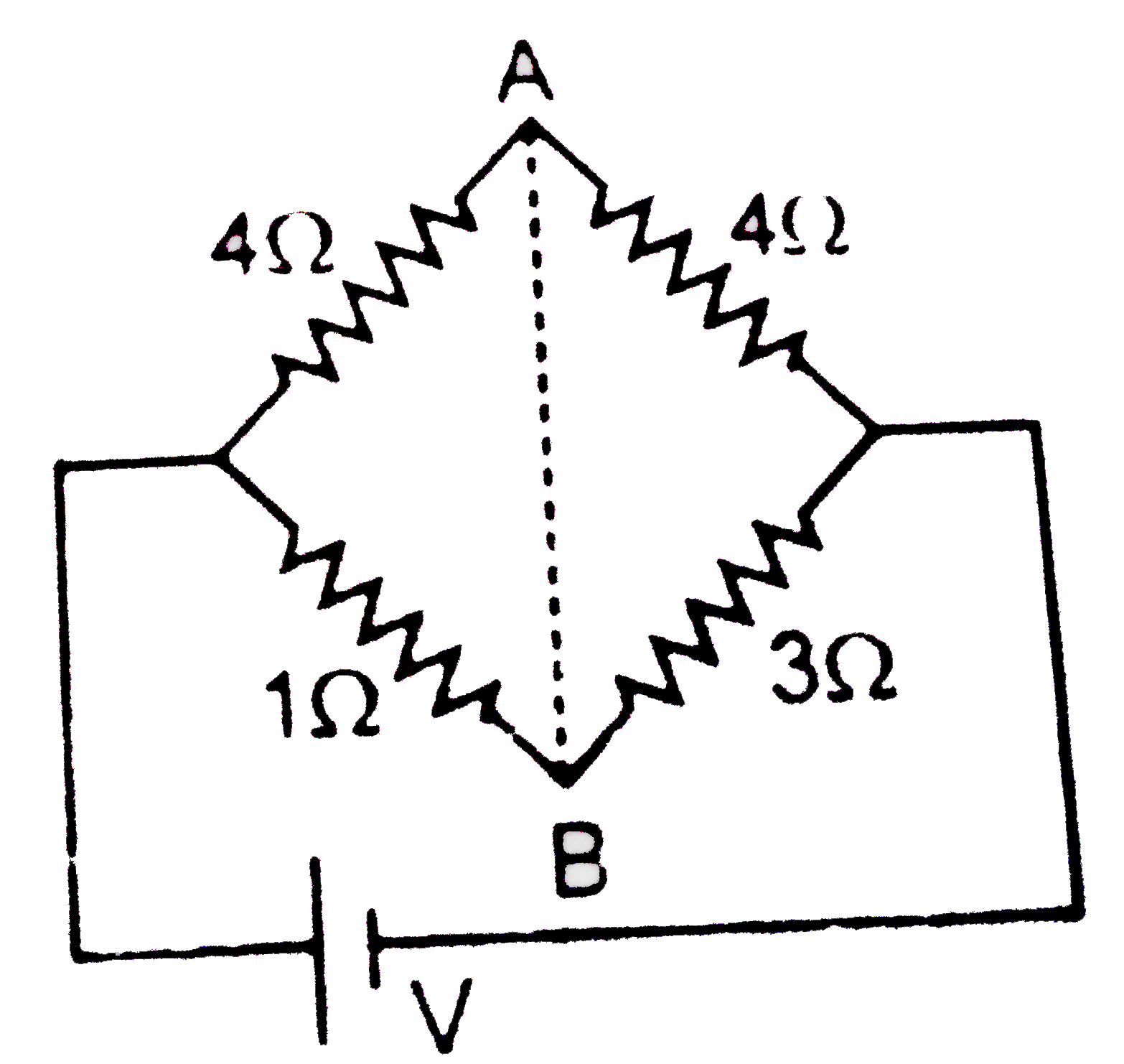A flow of 1012 electrons per minute in a conducting wire constitutes a current of
1.6×10−7A
1.6×10−8A
2.6×10−9A
2.67×10−10A
To find the current constituted by a flow of 1012 electrons per minute in a conducting wire, we can follow these steps:
Step 1: Understand the relationship between current, charge, and time
The current I in a circuit can be defined using the formula:
I=Qt
where Q is the total charge and t is the time in seconds.
Step 2: Calculate the total charge Q
The total charge Q can be calculated using the formula:
Q=n⋅e
where:
- n is the number of electrons,
- e is the charge of one electron, approximately 1.6×10−19 coulombs.
Given that n=1012 electrons, we can substitute this into the equation for Q:
Q=1012⋅(1.6×10−19) C
Step 3: Convert the time from minutes to seconds
The time given is 1 minute. We need to convert this to seconds:
t=1 minute=60 seconds
Step 4: Substitute Q and t into the current formula
Now we can substitute the values of Q and t into the current formula:
I=Qt=1012⋅(1.6×10−19)60
Step 5: Calculate the current I
First, calculate Q:
Q=1012⋅1.6×10−19=1.6×10−7 C
Now substitute Q into the current formula:
I=1.6×10−760=1.660×10−7=0.02667×10−7 A
This can be simplified to:
I≈2.67×10−9 A
Final Answer
Thus, the current constituted by a flow of 1012 electrons per minute is approximately:
I≈2.67×10−9 A
The current I in a circuit can be defined using the formula:
I=Qt
where Q is the total charge and t is the time in seconds.
The total charge Q can be calculated using the formula:
Q=n⋅e
where:
- n is the number of electrons,
- e is the charge of one electron, approximately 1.6×10−19 coulombs.
Q=1012⋅(1.6×10−19) C
The time given is 1 minute. We need to convert this to seconds:
t=1 minute=60 seconds
Now we can substitute the values of Q and t into the current formula:
I=Qt=1012⋅(1.6×10−19)60
First, calculate Q:
Q=1012⋅1.6×10−19=1.6×10−7 C
Now substitute Q into the current formula:
I=1.6×10−760=1.660×10−7=0.02667×10−7 A
This can be simplified to:
I≈2.67×10−9 A
Thus, the current constituted by a flow of 1012 electrons per minute is approximately:
I≈2.67×10−9 A
Similar Questions
A flow of (1012) electron per minute in a conducting wire constitutes a current of
View SolutionA flow of 107 electrons per second in a conducing wire constitutes a current of .
View SolutionHow many electrons per second pass through a section of wire carrying a current of 0.7A?
View SolutionThe charge possessed by an electron is 1.6 X 10^-19 coulombs. Find the number of electrons that will flow per second to constitute a current of 1 ampere.
View SolutionWhat will be the number of electron passing through a heater wire in one minute, if it carries a current of 8A
View SolutionA total of 6.0×1016 electrons pass through any cross - section of a conducting wire per second. Find the current.
View SolutionThe free electrons in conducting wire are in constant thermal motion. If such a wire, carrying no current, is placed in a magnetic field, is there a magnetic force on each free electron? Is there a magnetic force on the wire?
View SolutionA silver wire 1mm diameter carries a charge of 90 coulombs in 1 hours and 15 minutes. Silver contains 5.8×1028 free electrons per cm3 find the current in wire and drift velocity of the electron.
View SolutionWhen a current is established in a wire, the free electrons drift in the direction opposite to the current, Does the number of free electrons in the wire continuously decrease?
View SolutionIn the circuit shown if a conducting wire is connected between points A and B, the current in this wire will :-

View Solution
